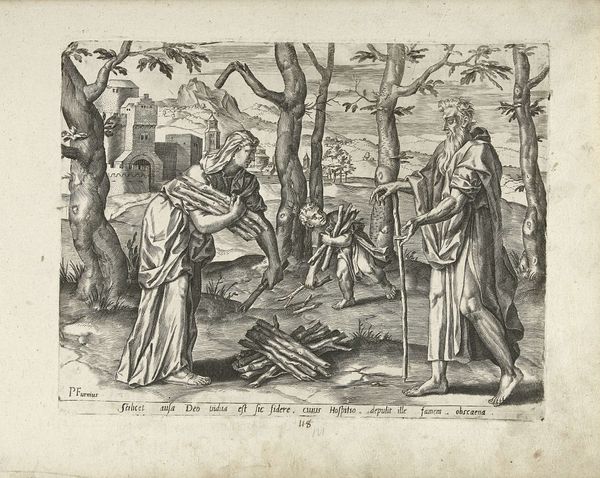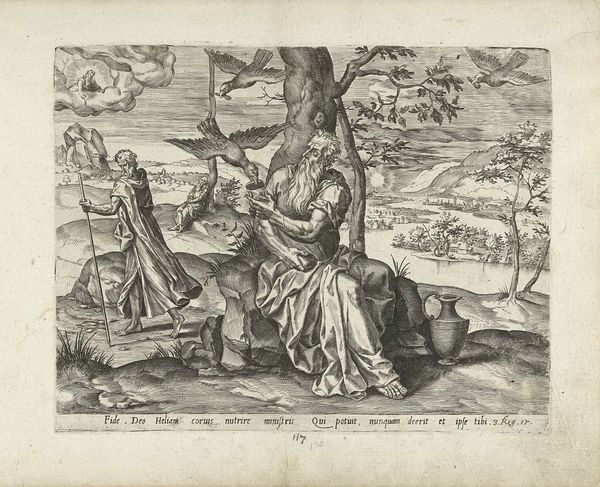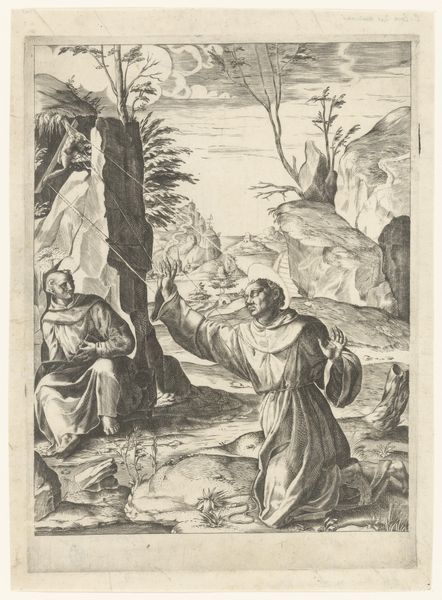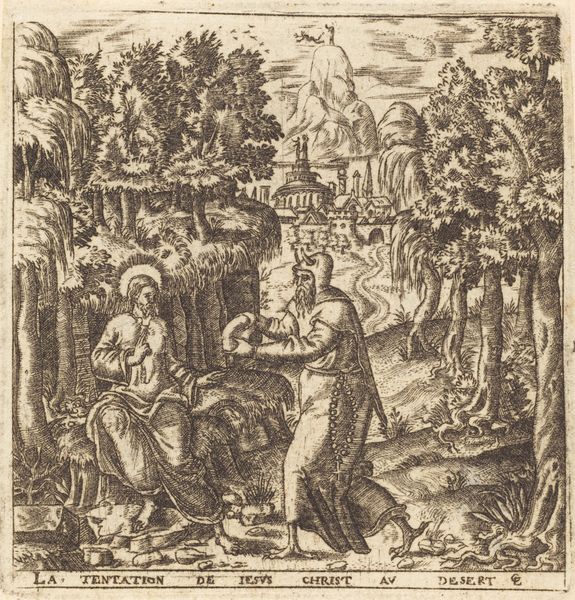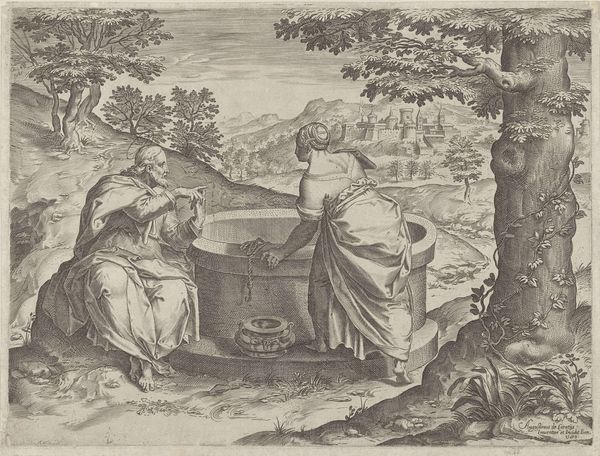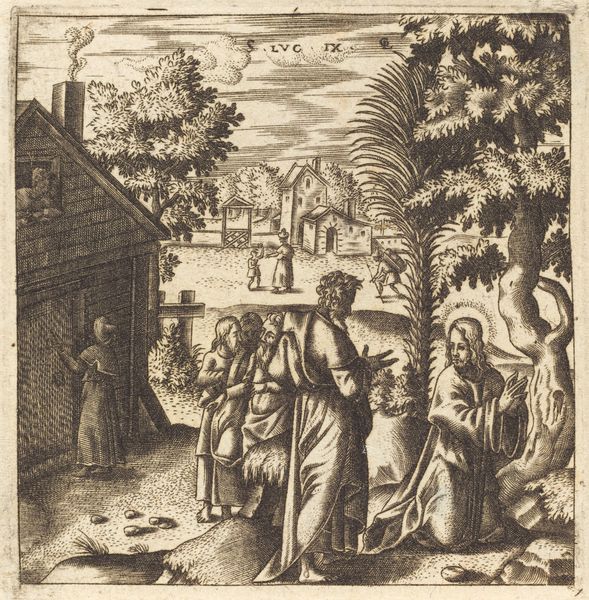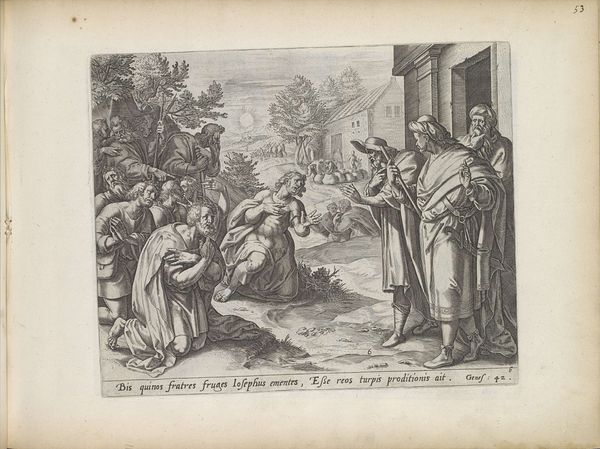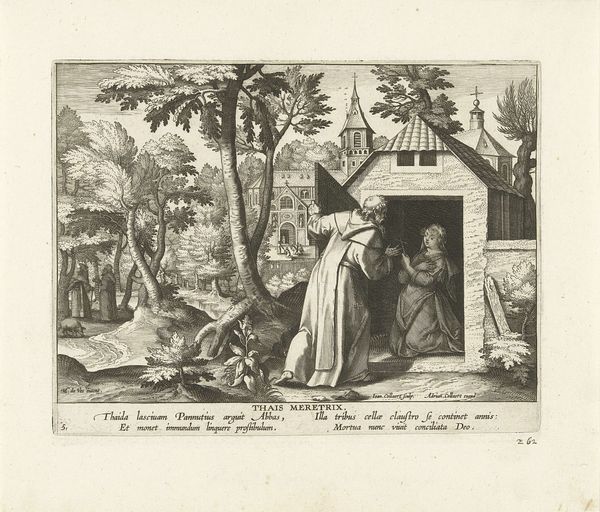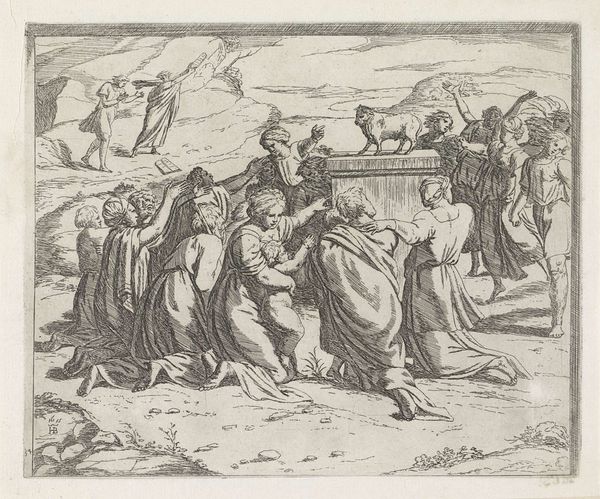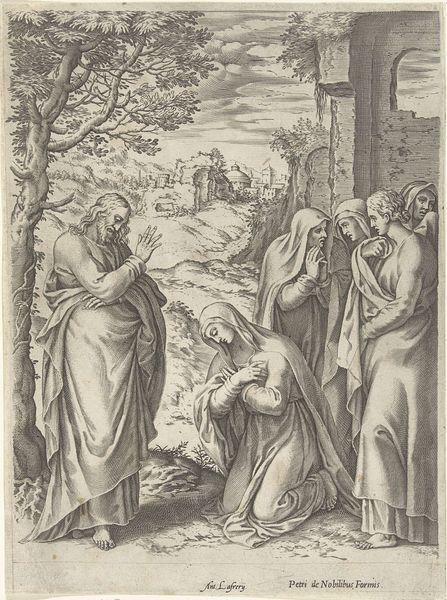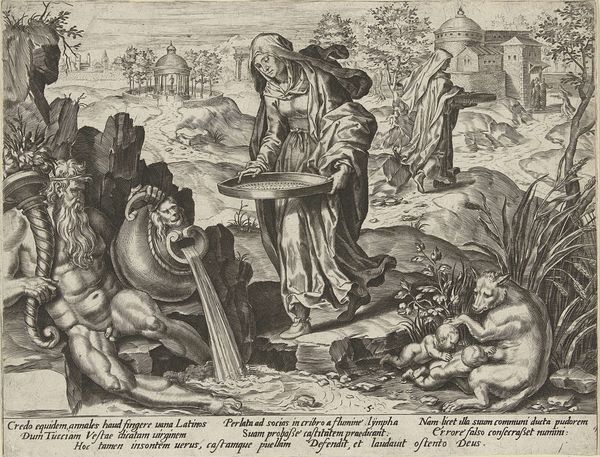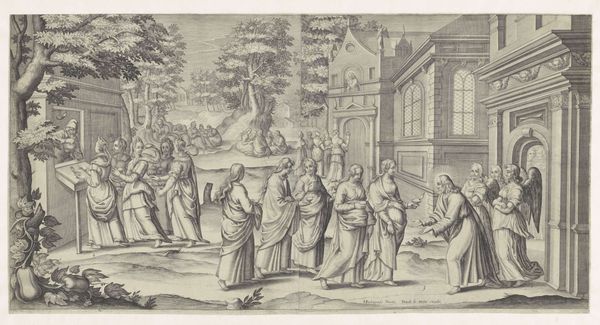
Elia draagt het weer tot leven gewekte kind terug naar de weduwe van Sarefat 1550 - 1625
0:00
0:00
pieterjalheafurnius
Rijksmuseum
Dimensions: height 211 mm, width 276 mm
Copyright: Rijks Museum: Open Domain
Curator: Let's take a closer look at this engraving from the Rijksmuseum’s collection: "Elia draagt het weer tot leven gewekte kind terug naar de weduwe van Sarefat", or "Elijah brings the resurrected child back to the widow of Sarepta," dating from 1550 to 1625 and attributed to Pieter Jalhea Furnius. Editor: Whoa, a resurrection scene! There's such intense emotion radiating from the widow—a raw mix of anguish and overwhelming relief frozen in this little rectangle of paper. Curator: Indeed. The subject, drawn from the First Book of Kings, carries profound symbolism, depicting Elijah returning the widow’s son, resurrected by God. Note how Furnius renders the scene in the Baroque style, even within the limitations of printmaking. Editor: Baroque, huh? You know, at first glance, I get this immediate sensation of operatic drama but rendered with this really fascinating almost muted quality of black and white. Like, it's grand but intimate all at once. It is very compelling. Curator: Consider the positioning: Elijah’s figure dominates the right, embodying divine power and grace, juxtaposed against the mother on the left, representing human grief and gratitude. The landscape isn't just background; it contributes to the emotional depth. See how the rocky formations on the horizon appear to mirror her turmoil? Editor: Good point. It’s clever. Almost as though nature itself is reacting to the miracle, or maybe echoing the inner landscape of the characters involved? Curator: Precisely. Think about the significance of resurrection themes during that era—a visual assertion of faith amidst religious and social upheavals. The image becomes more than just a depiction; it is a potent affirmation. Editor: Absolutely, there’s a certain timeless quality, the grief of a mother is an ever-lasting story we can still see today. This whole scene speaks to something so innately human, yet packaged in this wonderfully dramatic almost theatrical style. Thanks for enlightening me with a broader understanding! Curator: And thank you, that spontaneous observation added depth and reminded me about what still captures our attention even through so much time and change.
Comments
No comments
Be the first to comment and join the conversation on the ultimate creative platform.
